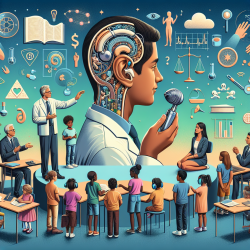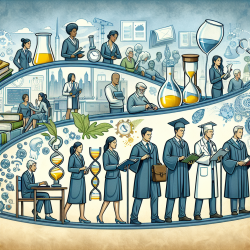In the ever-evolving landscape of digital health, leveraging cutting-edge technologies like machine learning (ML) is paramount for enhancing healthcare services. One of the most promising advancements in this field is transfer learning (TL), a technique that has shown immense potential in improving diagnostic accuracy, reducing computational costs, and addressing data limitations. This blog aims to help practitioners understand and implement the outcomes of the research presented in the article titled "Survey of Transfer Learning Approaches in the Machine Learning of Digital Health Sensing Data" by Chato et al. (2023).
Understanding Transfer Learning
Transfer learning is a machine learning approach that focuses on transferring knowledge from a previously trained model (source) to a new model (target) to enhance performance. This technique is particularly useful in digital health applications, where data can be incomplete, unstructured, or fragmented. The research by Chato et al. (2023) highlights various TL methods and strategies that can be employed to improve healthcare services and outcomes.
Key Transfer Learning Methods
- Feature Extraction: This method involves using a pretrained model to extract meaningful features from the data. These features are then used to train a new model, reducing the need for extensive data preprocessing and feature engineering.
- Fine-Tuning: Fine-tuning involves taking a pretrained model and adjusting its parameters to better fit the new task. This method can significantly improve the performance of the model on the target task, especially when data is limited.
- Domain Adaptation: This technique addresses the issue of heterogeneous data distributions by adapting the model to the target domain. It is particularly useful when working with data from different sources, such as various healthcare providers.
- Multitask Learning: Multitask learning involves training a single model to perform multiple related tasks simultaneously. This approach can improve generalization and reduce the need for large datasets.
- Meta-Learning: Techniques like zero-shot, one-shot, and few-shot learning fall under meta-learning. These methods enable the model to recognize new categories with minimal data, making them ideal for rare disease detection.
- Federated Learning: Federated learning allows multiple institutions to collaboratively train a model without sharing their data, ensuring privacy and security. This method is particularly beneficial for healthcare applications where data privacy is a concern.
Implementing Transfer Learning in Practice
For practitioners looking to implement TL in their digital health applications, the following steps can serve as a guideline:
- Identify the Task: Determine the specific healthcare task you aim to improve, such as disease diagnosis, patient monitoring, or therapy recommendations.
- Select the Appropriate TL Method: Choose the TL method that best fits your task and data characteristics. For instance, use fine-tuning for tasks with limited data or domain adaptation for heterogeneous data sources.
- Preprocess the Data: Ensure that your data is cleaned and preprocessed to match the input requirements of the pretrained model.
- Train the Model: Use the selected TL method to train your model on the target task. Monitor the performance and make necessary adjustments to improve accuracy and efficiency.
- Validate and Deploy: Validate the model using a separate dataset to ensure its generalization and robustness. Once validated, deploy the model in your healthcare application.
Encouraging Further Research
While the research by Chato et al. (2023) provides a comprehensive overview of TL methods, it is essential for practitioners to stay updated with the latest advancements in the field. Engaging in further research and experimentation can lead to the development of more robust and efficient digital health solutions.
To read the original research paper, please follow this link: Survey of Transfer Learning Approaches in the Machine Learning of Digital Health Sensing Data.










